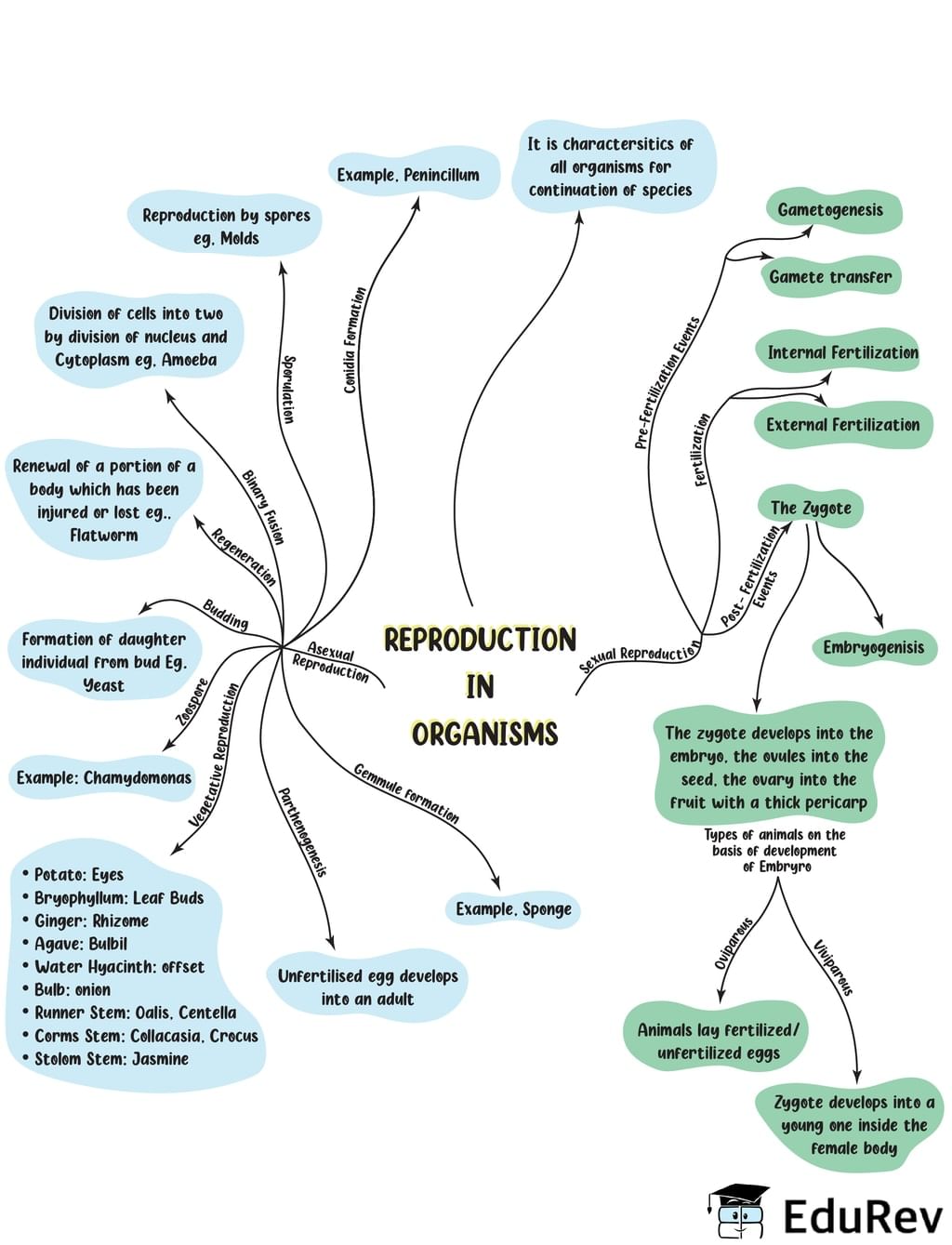UPSC Exam > UPSC Notes > Class 6 to 12 NCERT Mindmaps for UPSC Preparation > Mind Map: Reproduction in Organisms (Old NCERT)
Mind Map: Reproduction in Organisms (Old NCERT) | Class 6 to 12 NCERT Mindmaps for UPSC Preparation PDF Download

The document Mind Map: Reproduction in Organisms (Old NCERT) | Class 6 to 12 NCERT Mindmaps for UPSC Preparation is a part of the UPSC Course Class 6 to 12 NCERT Mindmaps for UPSC Preparation.
All you need of UPSC at this link: UPSC
FAQs on Mind Map: Reproduction in Organisms (Old NCERT) - Class 6 to 12 NCERT Mindmaps for UPSC Preparation
| 1. What is reproduction in organisms? |  |
Ans. Reproduction in organisms refers to the biological process by which new individuals of the same species are produced. It involves the production of offspring, either sexually or asexually, to ensure the survival and continuation of the species.
| 2. What are the different modes of reproduction in organisms? |  |
Ans. There are two main modes of reproduction in organisms: sexual reproduction and asexual reproduction. Sexual reproduction involves the fusion of gametes (reproductive cells) from two parents, resulting in offspring with a combination of genetic traits. Asexual reproduction, on the other hand, does not involve the fusion of gametes and produces offspring that are genetically identical to the parent.
| 3. How does sexual reproduction occur in organisms? |  |
Ans. Sexual reproduction in organisms involves the fusion of male and female gametes. In most animals, this process occurs through internal fertilization, where the male deposits sperm into the female's reproductive tract. The sperm then fertilizes the egg, resulting in the formation of a zygote. In plants, sexual reproduction can occur through pollination, where pollen from the male reproductive organ (stamen) is transferred to the female reproductive organ (pistil).
| 4. What are the advantages of sexual reproduction over asexual reproduction? |  |
Ans. Sexual reproduction offers several advantages over asexual reproduction. Firstly, it promotes genetic diversity, as offspring inherit a combination of genetic traits from both parents. This genetic diversity increases the chances of survival and adaptation to changing environments. Secondly, sexual reproduction allows for the repair of damaged DNA through recombination, reducing the risk of harmful mutations. Lastly, sexual reproduction can lead to the elimination of harmful genetic traits through natural selection.
| 5. Give an example of asexual reproduction in organisms. |  |
Ans. One example of asexual reproduction in organisms is budding. In this process, a new individual (bud) develops as an outgrowth from the parent organism. The bud eventually separates from the parent and grows into a fully functional individual. This form of reproduction is observed in organisms such as yeast, hydra, and some plants.
Related Searches






















